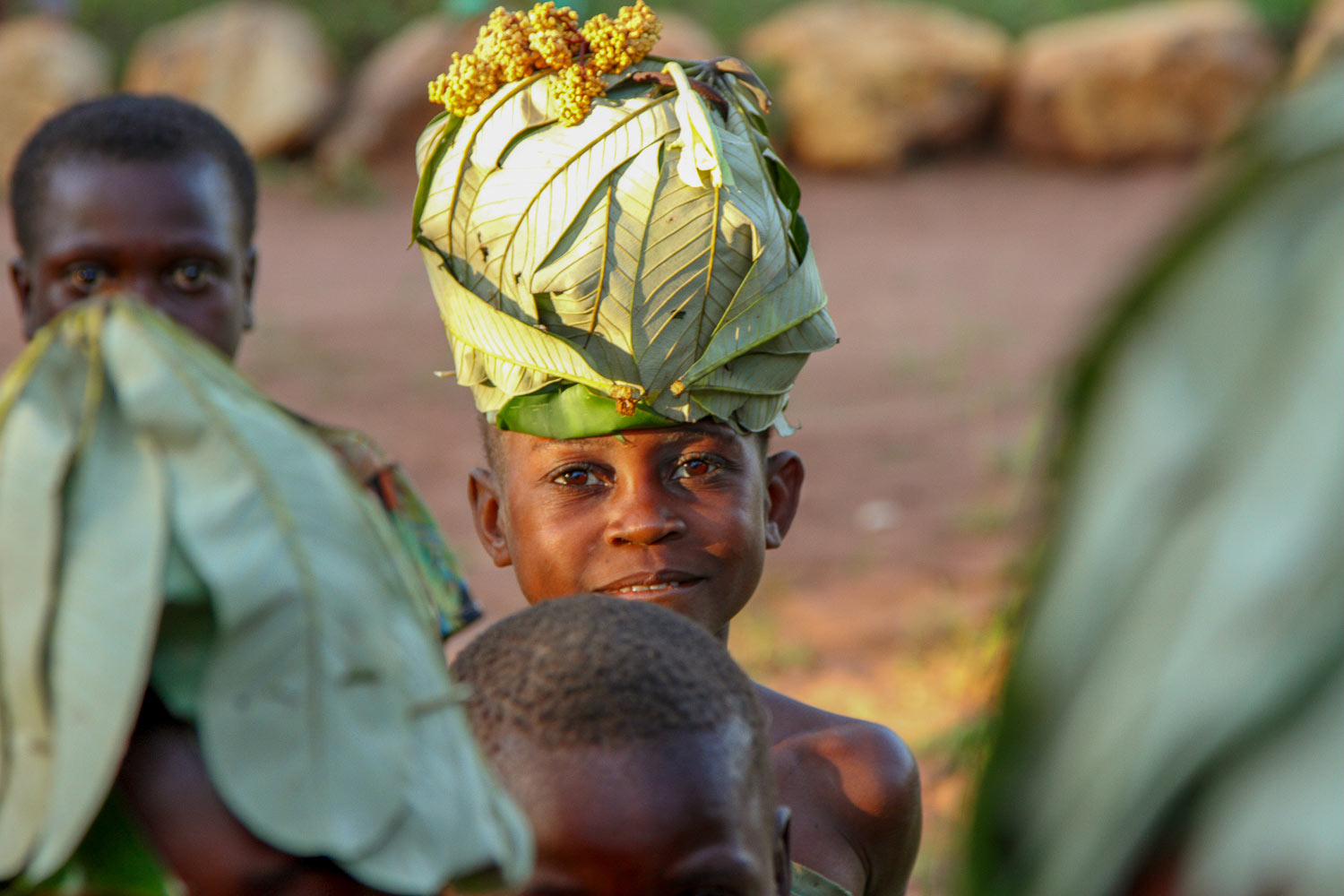
Explore activities in Dzanga-Sangha
Elephant visit
Dzanga Bai is a clearing that hosts spectacular intact populations of key forest fauna. This fauna includes one of the largest intact populations of forest elephants, as well as bongos, African forest buffaloes, giant forest hogs, bush pigs, sitatungas and even gorillas, and six species of duiker.

The drive from the Welcome Center to the forest parking lot is 14 kms. Access to Dzanga Bai is then done by foot, taking approximately 30 to 40 minutes. First, the path crosses a small stream with sandy bottoms. Light shoes are recommended. Then, we will follow some elephant paths through a beautiful closed-canopy forest until we reach the bai. Small primates (monkeys and mangabeys) and birds are often encountered along the way. Visitors are asked to be silent. During this time, you can develop an appreciation for the elephants’ astonishing ability to move discreetly through the forest. Trumpeting and various grunts by the elephants announce the arrival at the bai. A large viewing platform was built at its edge, from where you can observe different mammals and birds, including large flocks of parrots, coming to the clearing in their own time. Because of the orientation of the platform, afternoon visits offer a better light for observation and photography.
Gorilla Tracking
The Bai Hokou and Mongambe camps offer you the opportunity to track three groups of habituated lowland gorillas: The famous Makumba group with 3-year old twins and the new baby born in February 2019, the group led by Mayele, an amazing silverback who lives in Mongambe and Mata, and the new group just opened to tourism observation in April 2019 after 10 years of habituation.
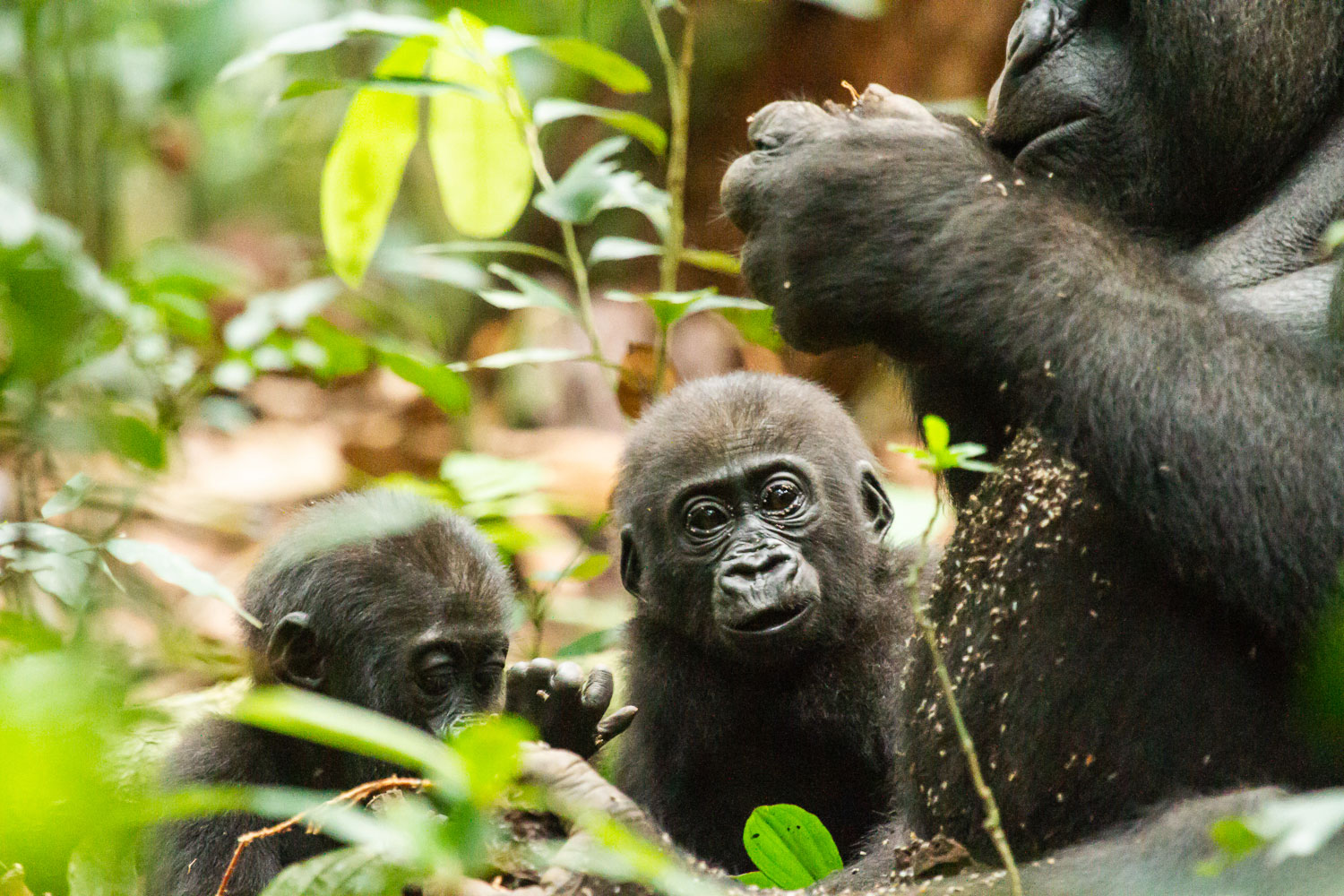
Visitors are transported 35 kms (to Bai Hokou) or 16 kms (to Mongambe) from the Welcome Center on a former logging road, going straight until it reaches a Limbali forest. Walks start from the campsite to search for the western lowland gorillas. It can take between 15 minutes to 3 hours to find them. All forest activities are led by trained guides who speak French and some also English. Only small groups of visitors (3 people maximum) are allowed.
Mangabey Tracking and Saline tour
In addition to gorilla tracking, Bai Hokou offers you the possibility to follow a group of mangabeys of three hundred individuals and to do a saline tour.
Hiking is one of the best ways to experience the rainforest ecosystem and also offers you the opportunity to visit some many open bais or clearings, which are frequented by forest wildlife. It is the most compelling tourism activity at Dzanga-Sangha.

The varied landscape of the clearings and forest types are of particular interest. Circuits may include, after Bai Hokou, Ngubunga Bai, Bakulangu Bai (named after the giant turaco), the two Mosokpo Bais ( “mud” in the Aka language), Mongole Bai ( the name of a tree) or Dibwe Bai ( “rock” in Aka). Near Mosokpo and Hokou Bai, it is possible to see how elephants modify their environment. The great Gilbertiodendrons had their bark torn off by these animals for food and are now dead.
The BaAka
Another major interest of Dzanga-Sangha is the encounter with the BaAka pygmy culture. You will have to opportunity to spend a few days in the forest while spending the night at Doli Lodge.
Dzanga-Sangha gives you the opportunity to go in the forest with the BaAka to experience their traditional way of living, through:
Net-hunting (The walk through the forest lasts 2 to 3 hours, led by a group of Aka men and women who conduct the hunt in their traditional fashion).
Crossbow-hunting
Medicinal plant collection with the BaAka women (The Aka women of Mossapoula and Yandoumbé accompany visitors in the forest to the places where they harvest different plants products. Depending on the season and the interests of visitors, the types of medicinal or dietary plants to look for may vary. Nonetheless, the women never return without bringing back the products of interest to them and available at the moment. This activity generally does not exceed two hours.

Elements of the trip
Cooking with the BaAka, building leaf huts with the BaAka, scoop-net fishing, honey harvest, tree climbing, dancing and singing.
At Mossapoula or Yandoumbé, the guide introduces each dance and explains its significance and execution. Some dances celebrate the return from the hunt; others represent a celebration of the engagement of two people. Some dances invoke the forest spirits, Boyobi and Ejengi. Apart from this organized ceremony, the visitors who accompany the BaAka during their daytime activities have the opportunity to hear the astonishing Eboka polyphonic songs, spontaneously initiated by the Pygmies either when leaving to fish or returning from the hunt.
Beautiful excursion by canoe
Traveling by canoe on the Mossapoula River, a tributary of the Sangha with a confluence located tens of meters upstream from the hotel. Embarked on a frail dugout carved from a single tree trunk, visitors must first get used to the instability of the boat. But Mossapoula is worth the visit because it allows an interesting view of an African forest: We first pass through a swampy, flood-prone forest and later penetrate in a vast open swamp, before plunging into the small, narrower raffia channels. Those who are interested may assist in the collection of Raffia wine and taste it. This beautiful excursion takes place either early in the morning or in the afternoon starting at 3 pm.
Hiking to a waterfall
This activity starts by taking a boat on the 500-m wide Sangha River, from where you will see the vegetation barrier formed by the forest. You will then hike to a waterfall where you can have an unforgettable shower! The path will take you through a spectacular prime rainforest. You also have the option to climb to the top of the waterfall for a view of the forest canopy. If you are lucky, you may encounter the rare Grey-necked Rockfowl.
Bayanga Village
Bayanga is the administrative seat of the Reserve and the Dzanga-Sangha Project. The Doli Lodge, which is the starting point for all tourist activities, is also found here, in an isolated location on the banks of river. Bayanga has experienced a growth in the 70s after the installation of an industrial sawmill. Originally, it was a fishing village, charted on German colonial maps as early as 1901. Today, Bayanga is home to approximately 4,000 people, most of them living in wooden houses with palm-thatched roofs. In addition to its early inhabitants of fishermen and pygmies, the population counts migrants from other parts of the country, attracted by employment opportunities.
Elephant visit
Elephant visit
Dzanga Bai is a clearing that hosts spectacular intact populations of key forest fauna. This fauna includes one of the largest intact populations of forest elephants, as well as bongos, African forest buffaloes, giant forest hogs, bush pigs, sitatungas and even gorillas, and six species of duiker.

The drive from the Welcome Center to the forest parking lot is 14 kms. Access to Dzanga Bai is then done by foot, taking approximately 30 to 40 minutes. First, the path crosses a small stream with sandy bottoms. Light shoes are recommended. Then, we will follow some elephant paths through a beautiful closed-canopy forest until we reach the bai. Small primates (monkeys and mangabeys) and birds are often encountered along the way. Visitors are asked to be silent. During this time, you can develop an appreciation for the elephants’ astonishing ability to move discreetly through the forest. Trumpeting and various grunts by the elephants announce the arrival at the bai. A large viewing platform was built at its edge, from where you can observe different mammals and birds, including large flocks of parrots, coming to the clearing in their own time. Because of the orientation of the platform, afternoon visits offer a better light for observation and photography.
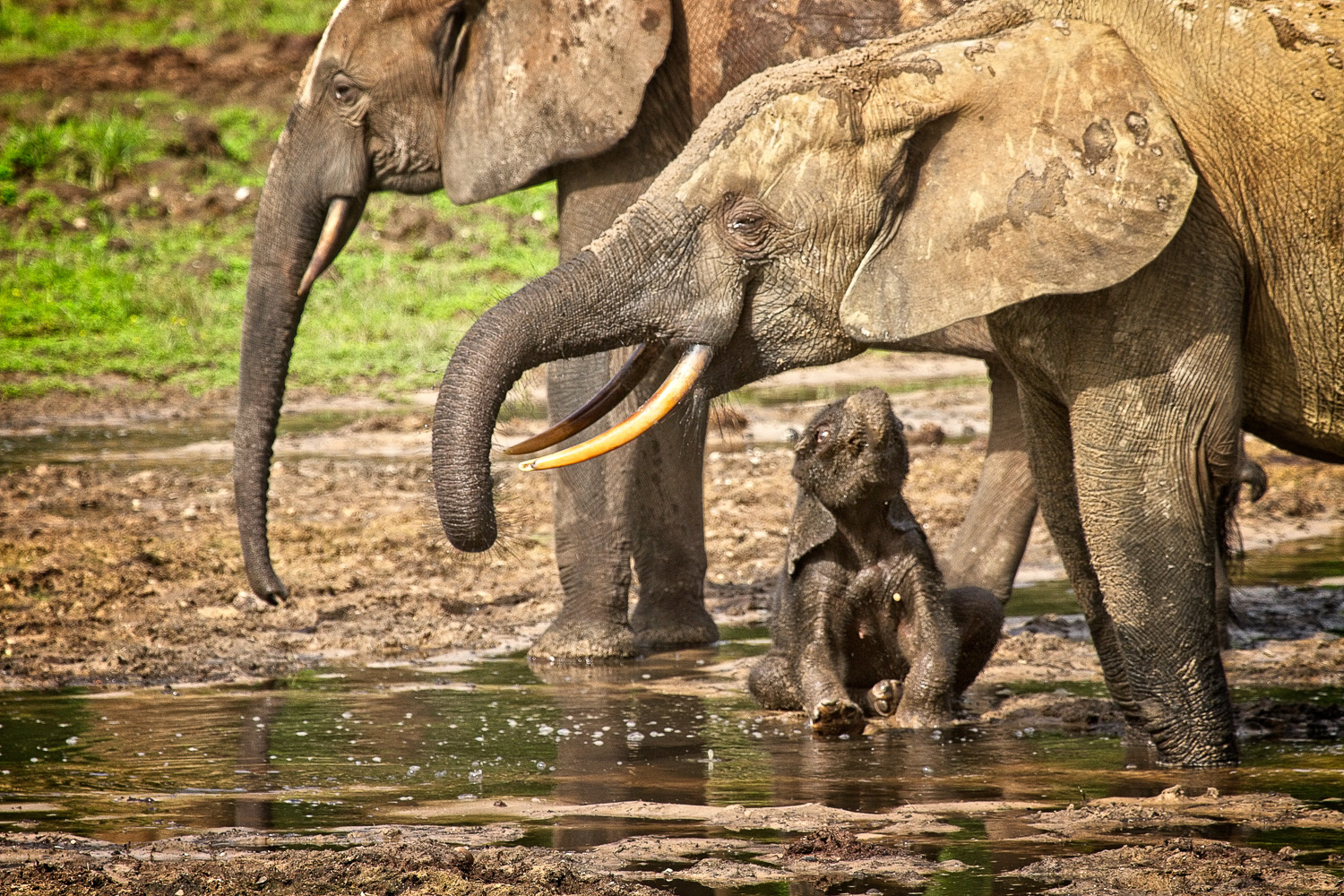
Gorilla Tracking
Gorilla Tracking
The Bai Hokou and Mongambe camps offer you the opportunity to track three groups of habituated lowland gorillas: The famous Makumba group with 3-year old twins and the new baby born in February 2019, the group led by Mayele, an amazing silverback who lives in Mongambe and Mata, and the new group just opened to tourism observation in April 2019 after 10 years of habituation.

Visitors are transported 35 kms (to Bai Hokou) or 16 kms (to Mongambe) from the Welcome Center on a former logging road, going straight until it reaches a Limbali forest. Walks start from the campsite to search for the western lowland gorillas. It can take between 15 minutes to 3 hours to find them. All forest activities are led by trained guides who speak French and some also English. Only small groups of visitors (3 people maximum) are allowed.
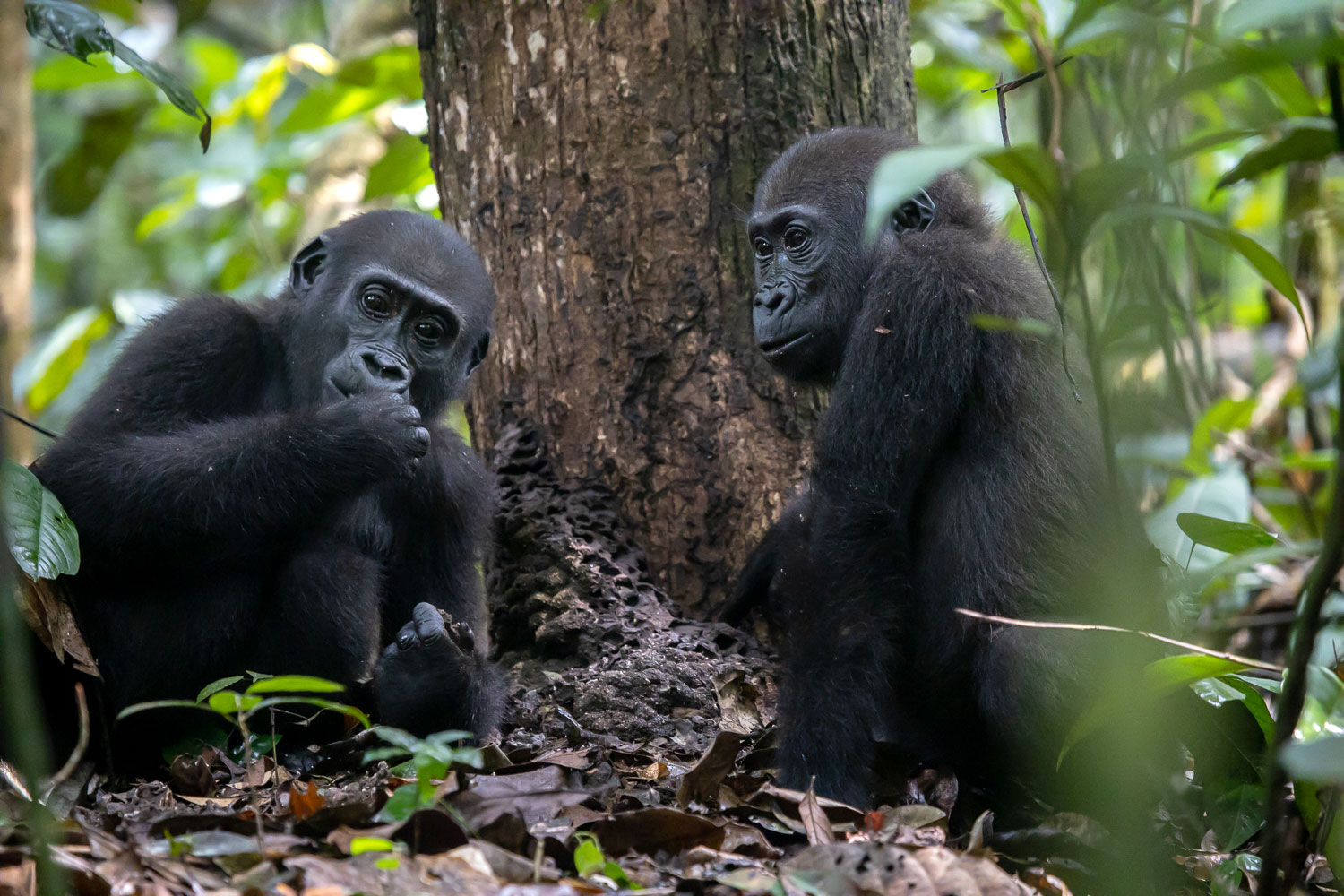
Mangabey Tracking and Saline tour
Mangabey Tracking and Saline tour
In addition to gorilla tracking, Bai Hokou offers you the possibility to follow a group of mangabeys of three hundred individuals and to do a saline tour.
Hiking is one of the best ways to experience the rainforest ecosystem and also offers you the opportunity to visit some many open bais or clearings, which are frequented by forest wildlife. It is the most compelling tourism activity at Dzanga-Sangha.

The varied landscape of the clearings and forest types are of particular interest. Circuits may include, after Bai Hokou, Ngubunga Bai, Bakulangu Bai (named after the giant turaco), the two Mosokpo Bais ( “mud” in the Aka language), Mongole Bai ( the name of a tree) or Dibwe Bai ( “rock” in Aka). Near Mosokpo and Hokou Bai, it is possible to see how elephants modify their environment. The great Gilbertiodendrons had their bark torn off by these animals for food and are now dead.

The BaAka
The BaAka
Another major interest of Dzanga-Sangha is the encounter with the BaAka pygmy culture. You will have to opportunity to spend a few days in the forest while spending the night at Doli Lodge.
Dzanga-Sangha gives you the opportunity to go in the forest with the BaAka to experience their traditional way of living, through:
Net-hunting (The walk through the forest lasts 2 to 3 hours, led by a group of Aka men and women who conduct the hunt in their traditional fashion).

Crossbow-hunting
Crossbow-hunting
Medicinal plant collection with the BaAka women (The Aka women of Mossapoula and Yandoumbé accompany visitors in the forest to the places where they harvest different plants products. Depending on the season and the interests of visitors, the types of medicinal or dietary plants to look for may vary. Nonetheless, the women never return without bringing back the products of interest to them and available at the moment. This activity generally does not exceed two hours.

Elements of the trip
Cooking with the BaAka, building leaf huts with the BaAka, scoop-net fishing, honey harvest, tree climbing, dancing and singing.
At Mossapoula or Yandoumbé, the guide introduces each dance and explains its significance and execution. Some dances celebrate the return from the hunt; others represent a celebration of the engagement of two people. Some dances invoke the forest spirits, Boyobi and Ejengi. Apart from this organized ceremony, the visitors who accompany the BaAka during their daytime activities have the opportunity to hear the astonishing Eboka polyphonic songs, spontaneously initiated by the Pygmies either when leaving to fish or returning from the hunt.
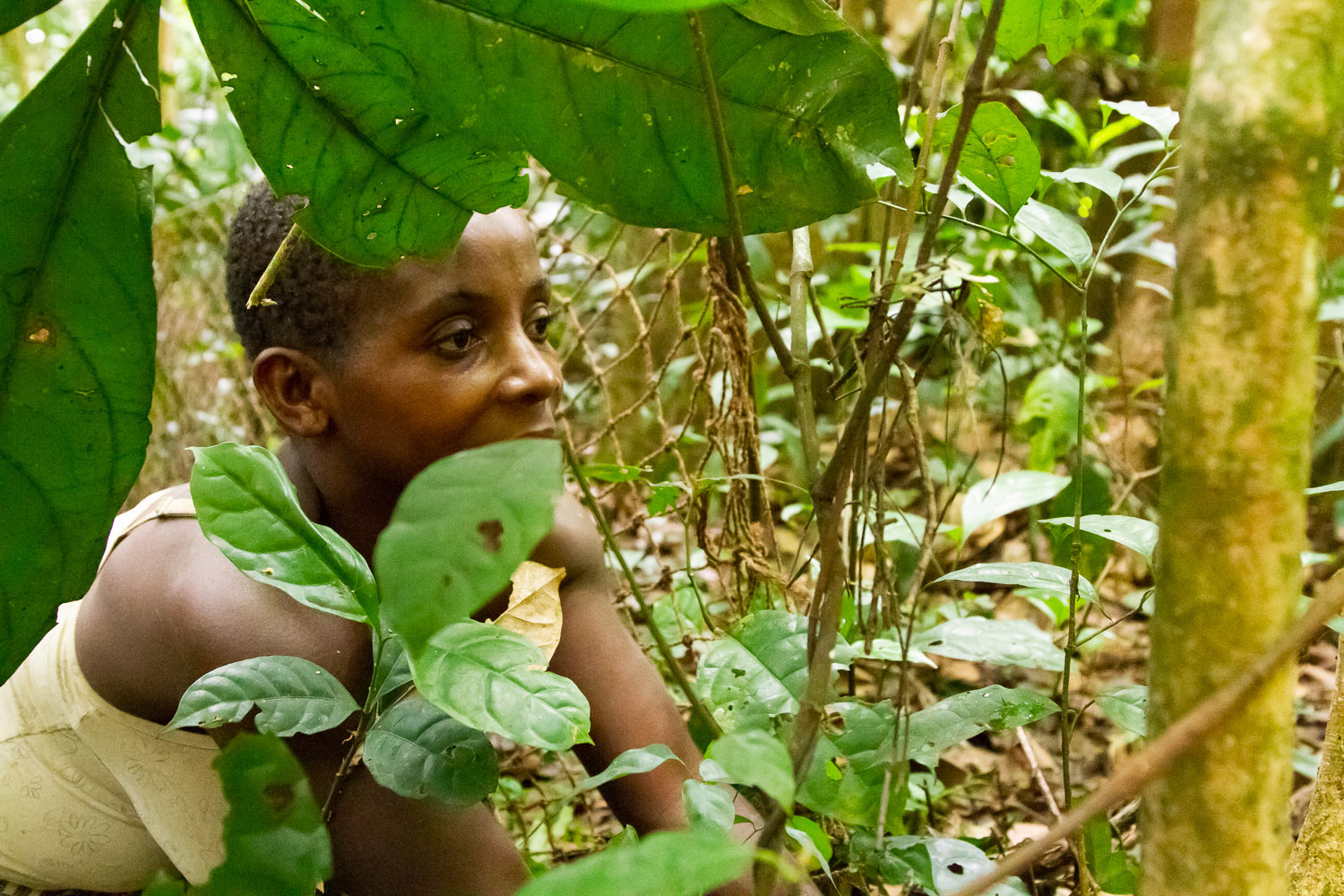
Beautiful excursion by canoe
Beautiful excursion by canoe
Traveling by canoe on the Mossapoula River, a tributary of the Sangha with a confluence located tens of meters upstream from the hotel. Embarked on a frail dugout carved from a single tree trunk, visitors must first get used to the instability of the boat. But Mossapoula is worth the visit because it allows an interesting view of an African forest: We first pass through a swampy, flood-prone forest and later penetrate in a vast open swamp, before plunging into the small, narrower raffia channels. Those who are interested may assist in the collection of Raffia wine and taste it. This beautiful excursion takes place either early in the morning or in the afternoon starting at 3 pm.
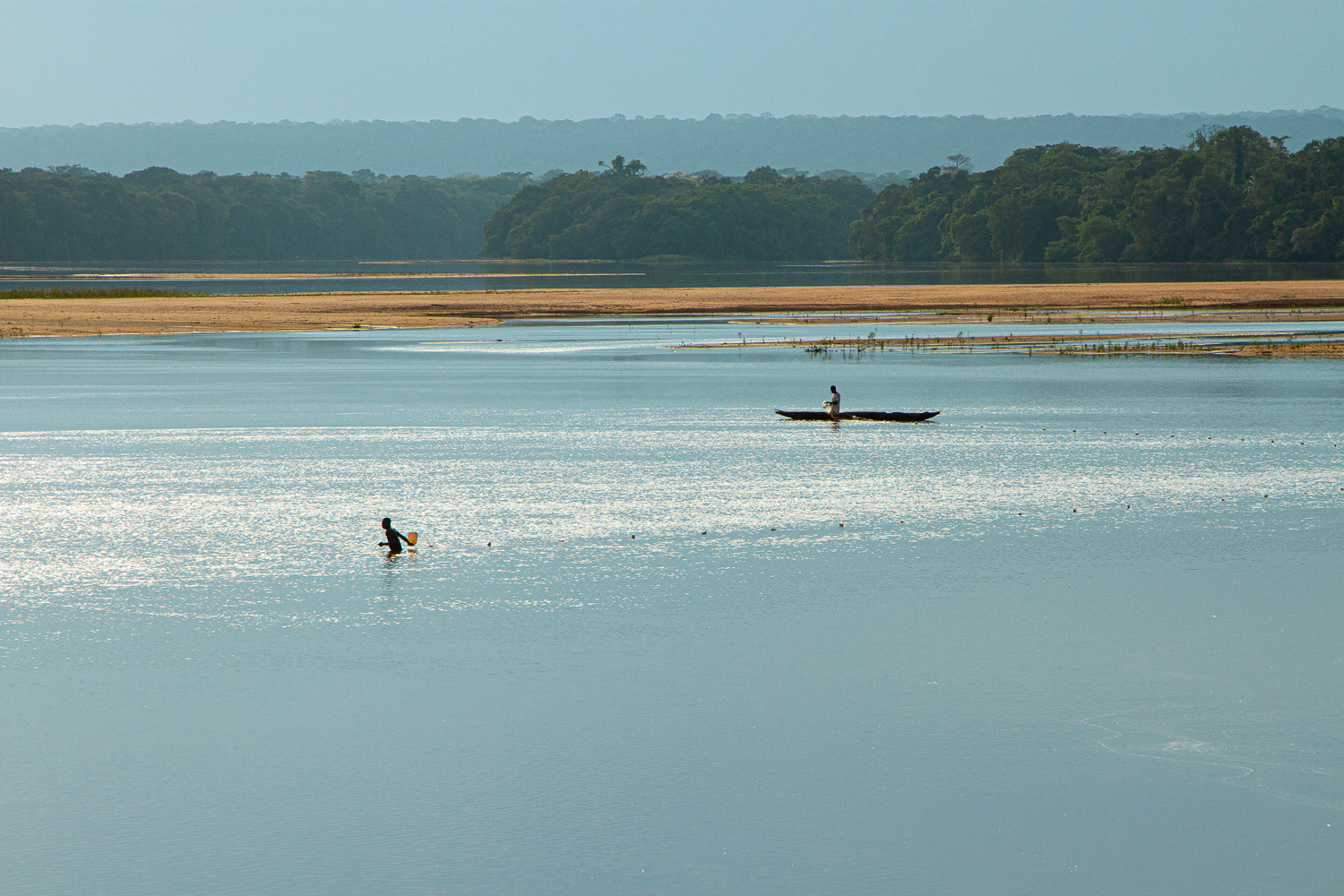
Hiking to a waterfall
Hiking to a waterfall
This activity starts by taking a boat on the 500-m wide Sangha River, from where you will see the vegetation barrier formed by the forest. You will then hike to a waterfall where you can have an unforgettable shower! The path will take you through a spectacular prime rainforest. You also have the option to climb to the top of the waterfall for a view of the forest canopy. If you are lucky, you may encounter the rare Grey-necked Rockfowl.
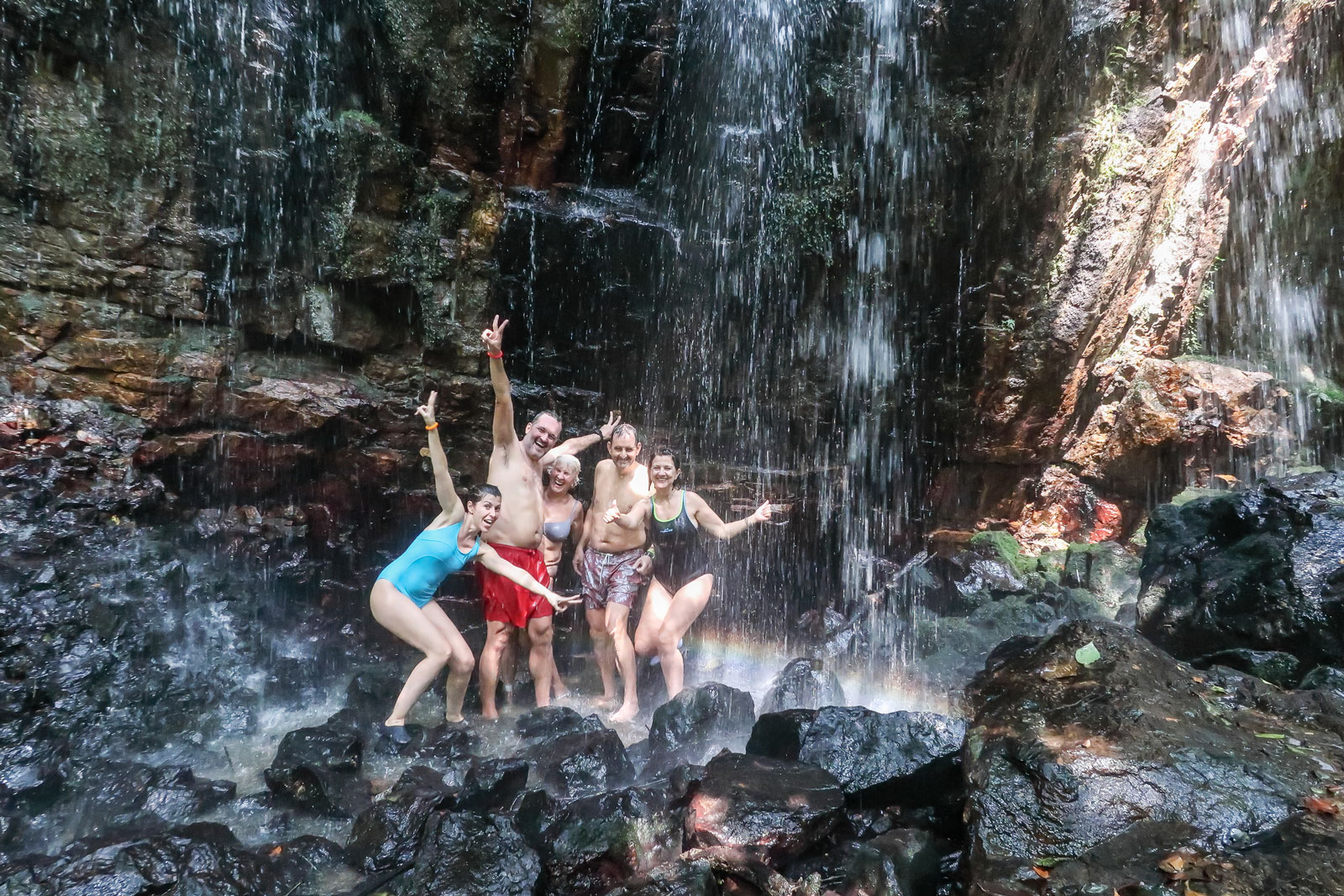
Bayanga Village
Bayanga Village
Bayanga is the administrative seat of the Reserve and the Dzanga-Sangha Project. The Doli Lodge, which is the starting point for all tourist activities, is also found here, in an isolated location on the banks of river. Bayanga has experienced a growth in the 70s after the installation of an industrial sawmill. Originally, it was a fishing village, charted on German colonial maps as early as 1901. Today, Bayanga is home to approximately 4,000 people, most of them living in wooden houses with palm-thatched roofs. In addition to its early inhabitants of fishermen and pygmies, the population counts migrants from other parts of the country, attracted by employment opportunities.
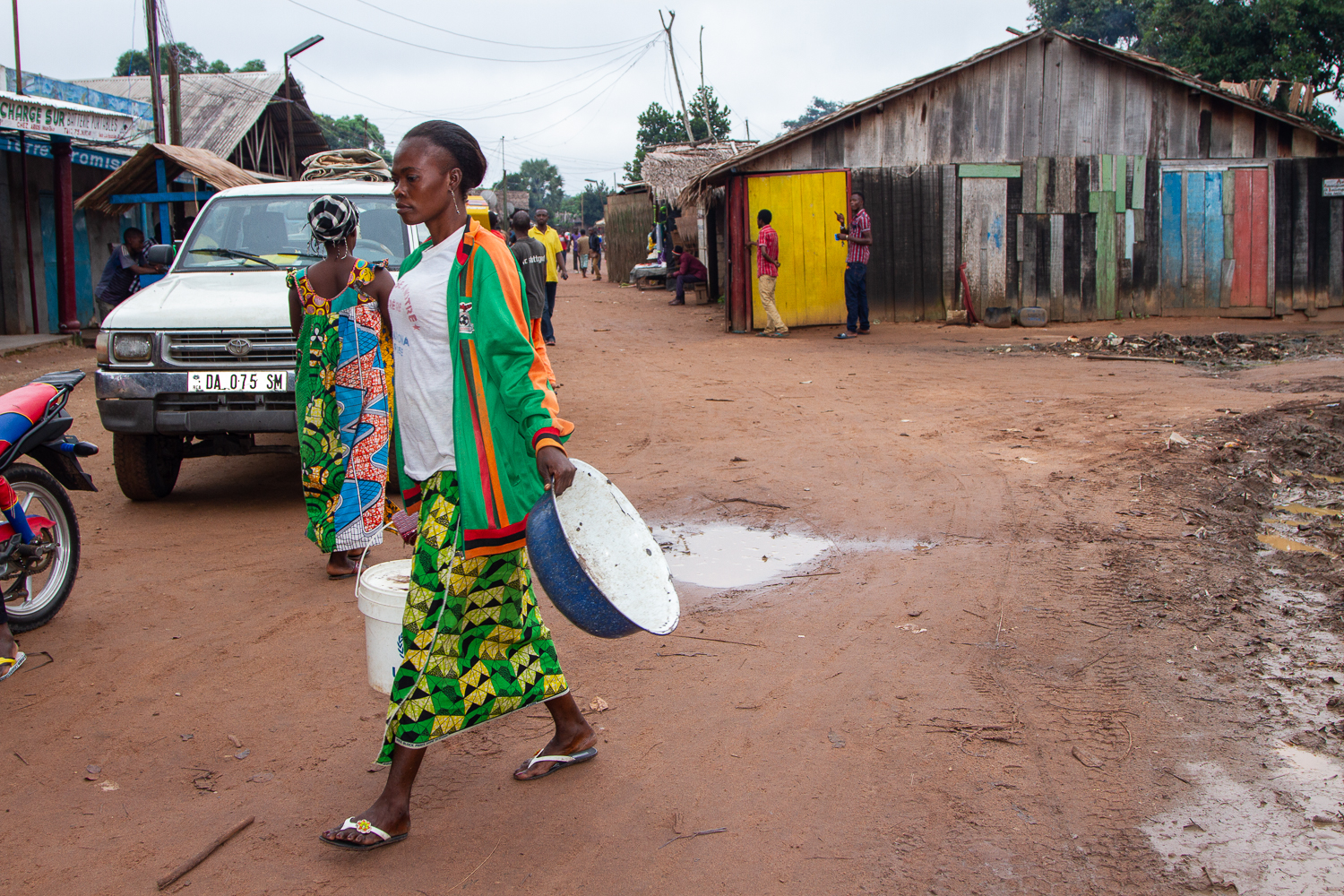
Wildlife activities
- Observation of forest elephants at the Dzanga Clearing
- Tracking lowland gorillas at Bai Hokou and Mongambe
- Tracking mangabeys at Bai Hokou
- Hiking circuits around the clearings
Experiencing local cultures
- Forest immersion with the Ba’Aka people (Net-hunting, harvesting of plant products,
- collection of medicinal plants, Aka fishing, dance)
- Hiking to a waterfall and in a primary forest
- Dugout canoe trips on the Sangha and Mossapoula Rivers
- Harvesting raffia palm wine
How to Book
Easy trip organizing: Tour operators or travel agencies have several all-inclusive itineraries through an all-inclusive booking. For more activities, please send an email to request information:
We will be happy to help and send you information about activities and prices.